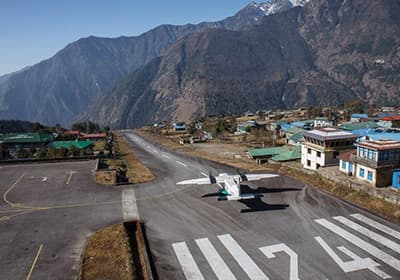Nepal is a beautiful country nestled in the Himalayas, between India and China. Known for its diverse culture, stunning landscapes, and warm hospitality, Nepal attracts travelers from all over the world. Here are some essential travel information and tips to help you plan your visit:
Visa Requirements
Most nationalities require a visa to enter Nepal. You can obtain a tourist visa on arrival at Tribhuvan International Airport in Kathmandu or at designated land border crossings. Visas are available for 15, 30, or 90 days, and their fees vary depending on your nationality and duration of stay. Check the latest visa requirements and fees on the official website of the Department of Immigration, Nepal (http://www.nepalimmigration.gov.np/).
Currency
The currency of Nepal is the Nepalese Rupee (NPR). It is advisable to carry cash, especially in smaller towns and remote areas. ATMs are widely available in major cities like Kathmandu and Pokhara. Credit cards are accepted in larger hotels, restaurants, and some shops but may not be accepted in smaller establishments.
Language
The official language is Nepali, but many people speak English, especially in tourist areas. Learning a few basic Nepali phrases can be helpful and appreciated by the locals.
Best Time to Visit
The best time to visit Nepal is during the spring (March to May) and autumn (September to November) seasons. The weather is pleasant, and the skies are clear, offering great views of the mountains. The monsoon season (June to August) can be challenging due to heavy rainfall and potential landslides.
Health and Safety
Make sure to get travel insurance that covers medical evacuation, as healthcare facilities in remote areas may be limited. Consult your doctor about vaccinations and medications before traveling. Avoid drinking tap water and opt for bottled or properly treated water. Be cautious of altitude sickness, especially when trekking in high-altitude regions.
Attractions
Mount Everest
The world's highest peak, located in the Himalayas, and a major draw for adventurers and trekkers from around the world.
Kathmandu Valley
A UNESCO World Heritage Site and home to many temples, palaces, and historical sites.
Chitwan National Park
A popular destination for wildlife enthusiasts and nature lovers, famous for its Bengal tigers, one-horned rhinos, and other rare species.
Pokhara
A picturesque city located on the shores of Lake Phewa, surrounded by stunning mountain views and a gateway to many treks in the Annapurna region.
Boudhanath Stupa
One of the largest stupas in the world and a center of Tibetan Buddhism in Nepal.
Pashupatinath Temple
A famous Hindu temple dedicated to Lord Shiva, located on the banks of the Bagmati River in Kathmandu.
Swayambhunath Stupa (Monkey Temple)
A famous Buddhist temple located on a hilltop in Kathmandu, known for its beautiful views of the city and resident monkey population.
Accommodations in Nepal
Nepal has a wide range of accommodations to suit all budgets and preferences. Here are some options for accommodations in Nepal:
Guesthouses and hostels
These are usually the most affordable option for budget travelers. They are typically small, family-run establishments that offer basic rooms and shared facilities.
Tea houses
These are small lodges along trekking routes that offer basic accommodation and meals. They are a popular option for trekkers in Nepal.
Hotels
There are many hotels in Nepal, ranging from budget to luxury. They offer a range of amenities, including restaurants, bars, and sometimes swimming pools.
Resorts
Nepal has several resorts that offer luxurious accommodations and amenities, including spas, swimming pools, and fine-dining restaurants.
Homestays
Some locals in Nepal offer homestay accommodations, where visitors can stay with a local family and experience Nepali culture firsthand.
Camping
Camping is a popular option for trekkers in Nepal. There are designated camping sites along many trekking routes, and companies can provide equipment and guides.
Food
Nepalese cuisine is a delicious blend of Indian and Tibetan influences and features dishes like momos (dumplings), daal bhat (lentil soup and rice), and chow mein (stir-fried noodles). You can find local food at street stalls, cafes, and restaurants.
Culture
Nepal is a predominantly Hindu country, but it also has a significant population of Buddhists, Muslims, and other religious groups. The country is rich in cultural heritage, with numerous temples, shrines, and monasteries to visit.







